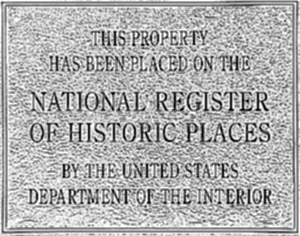By Madeleine Fournier
Ed Koolakian’s upscale men’s clothing store, a fixture of the neighborhood for 47 years, is the oldest business in Hanover Square and still sells custom suits for $1,200 and
Ed Koolakian sits, leaning back in a straight-backed, wooden, kitchen chair, surrounded by the clothing empire three generations of his family built in Hanover Square. His father and grandfather opened Koolakian’s in 1957. At 68, dapper Ed looks like he could be a mannequin in the window of his store. He wears a fitted navy blue suit, light blue tie, and checkered button-down with tiny embroidered initials on the cufflinks. With horn-rimmed glasses and a sharp haircut, he serves as a serious, professional contrast to the cheery yellow painted walls of the store that frame the suits, socks, and ties he sells. He’s tall and thin, with steely grey eyes that occasionally turn to the custom-suit display at the back of the shop. Aside from the tinny sounds of a radio station playing ‘80s songs, the store is quiet.
“I can’t sell as much today,” he says, adding that he misses the hustle and bustle of Syracuse 30 years ago, a time when people considered suits everyday wear instead of their Sunday best. He grew up in town, and back when factory jobs still existed in large quantities, business boomed. “People were working downtown and everybody mostly dressed up. That was really kind of nifty. I had a lot of clients.”
The building Koolakian’s resides in, wedged between a hair salon and a martini bar, has stood in Hanover Square since 1957. Koolakian’s is the oldest business in Hanover, and the second oldest in downtown Syracuse. Before the store relocated, it had another location a few blocks east in the now-abandoned Verizon building. That was when Ed was 9 years old. Ed remembers that store. “They did a lot of fabric. They made clothing. They contracted with some manufacturers to make custom overcoats,” Ed says. “It would be really dressy — cashmere or wool, herringbone coats with velvet collars and things like that. That was before ‘57.” When Ed joined the crew, customers began opting for off-the-rack suits. “The custom was fading away,” he says.
As customers’ preferences changed, so did the store. During the custom days, the shop itself was around half its current size because the back half of the store accommodated tailoring and dry-cleaning operations. Now, Ed says, they expanded the shop and returned to doing more custom work. Custom suits earn him more profit than off-the-rack ones — the average off-the-rack suit is around $595, but a costume suite easily costs more than $1,200. “If a man comes in and says ‘I want to pick out a suit, what do you have for spring?’,” Ed says, “I respond with these.” With that, he pulls over a large, dusty binder thick with swatches and thread colors. The swatches, each an inch, feature different pastel patterns of plaids and checkered prints. As he shows the various spring swatches, he runs his withered, yet nimble fingers over the embroidery detail. “So I’ve got a lot of those,” he says. “We can really trim the garment out with a custom lining.”
Koolakian, who will has worked at the store for 47 years, graduated from the State University of New York at Brockport with a major in economics and a minor in business. In college, he worked at a ski shop in Dewitt on the weekends. “They had new and used equipment they wanted me to sell. So back at age 18, I was making a good living,” he says. “I had a partner, and I always had an interest in retail.” In 1970, there was room for Ed to come into Koolakian’s as a business partner, and he did.
Being a fixture in Hanover for almost 50 years means Ed has witnessed many businesses come and go (mostly failed bars). He remembers the State Tower Building, standing tall at the tip of the square, when it was fully occupied by lawyers, physicians, and stockbrokers. Now, it sits mostly empty and is being renovated for upscale lofts, which, Ed hopes, will bring business back to the square. But the bars don’t offer much hope for Ed, who believes they aren’t good for the area because they only attract customers on weekend nights. He also believes Armory Square’s growth has pulled people away from Hanover Square. “We need retail. Retail brings people down,” he says. “Get retail and you get families here. It could be a women’s store, a shoe store, even an antique store. I’d really like to see an antique store here.”
Dennis Connors, a historian for the Onondaga Historical Association and a friend of the Koolakian family, knows how much Ed cares for downtown Syracuse. He is a member of the Downtown Committee, a Syracuse group that tries to encourage revitalization and retention of downtown businesses, with Connors, and he actively tries to contribute to bettering the community. “He’s been kind of a landmark. Him and the store are kind of a landmark itself,” Connors says. “They’re an anchor.”
Despite his role in securing the square’s landmark status, Ed says he’d like to retire eventually. But he has no plans to do so unless he finds the right person to take over Koolakian’s. “Do I want to work another 10 years?” Ed asks, mulling the question over as he repeats it. “No, I don’t. I mean, I’m over 65, and I know people who say ‘Oh jeez, why are you still working?’ I mean, I don’t want to retire now. But I’d like to have an exit strategy.”








